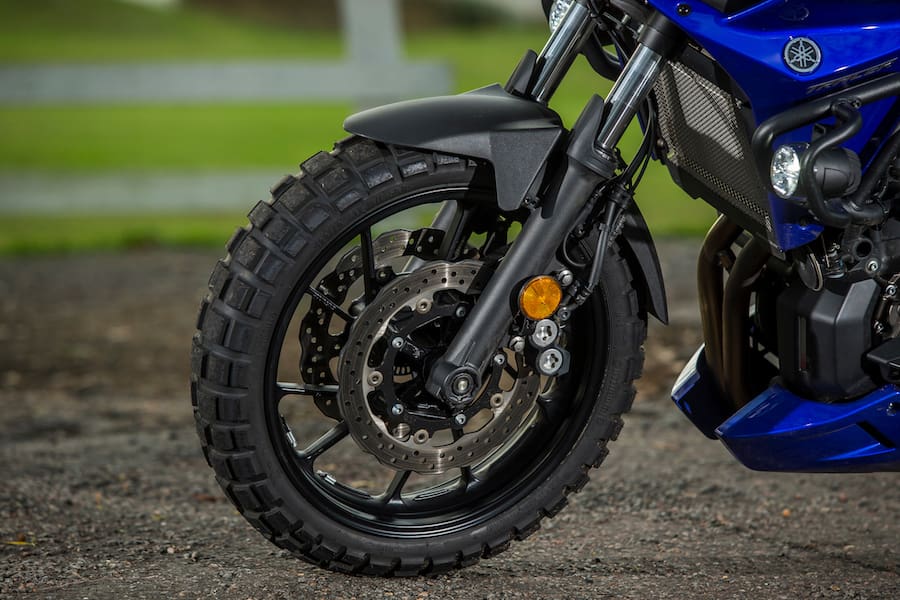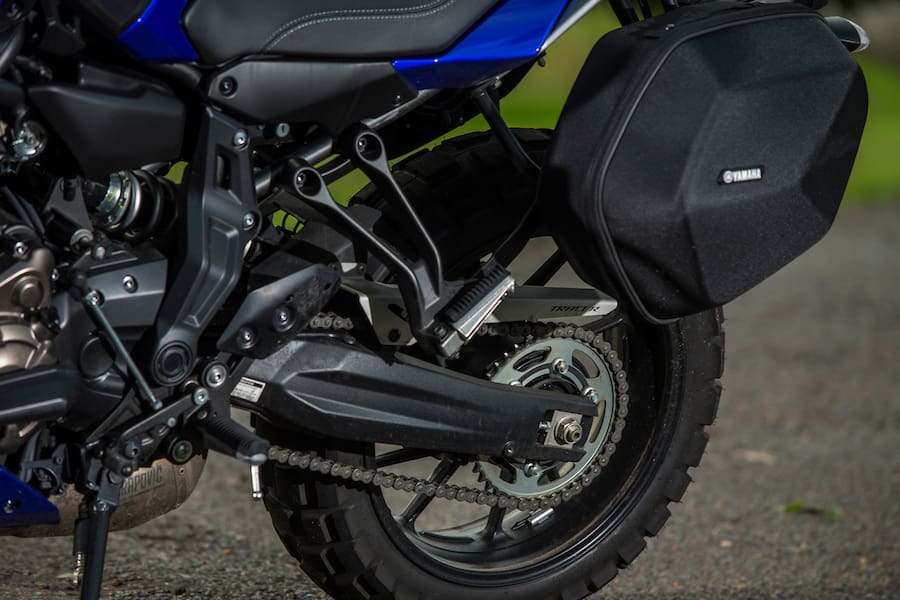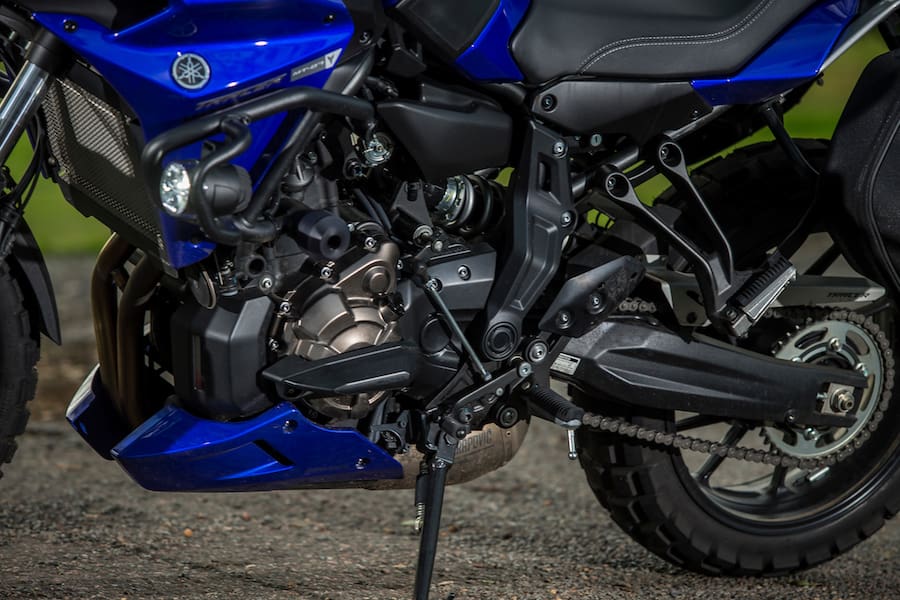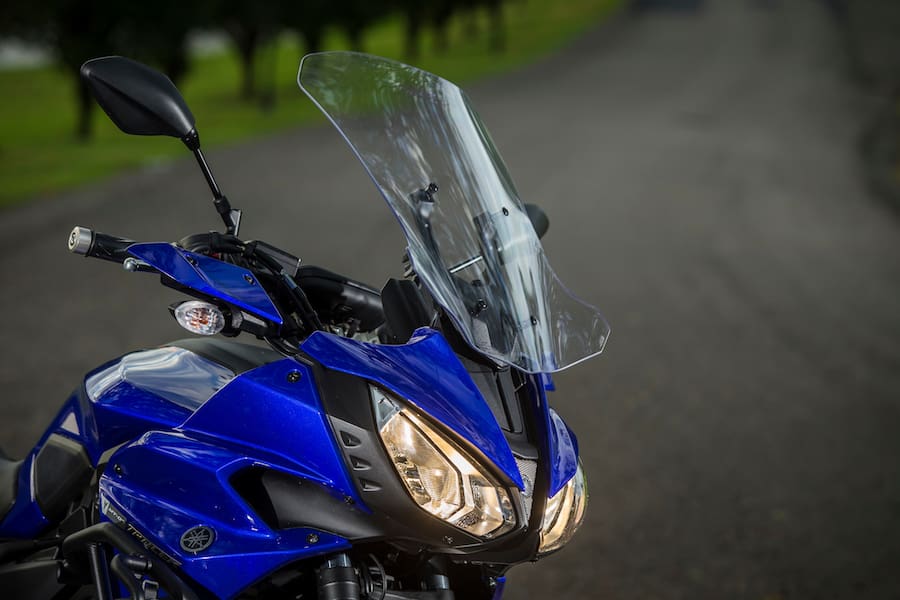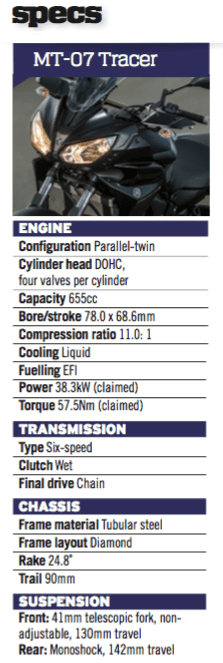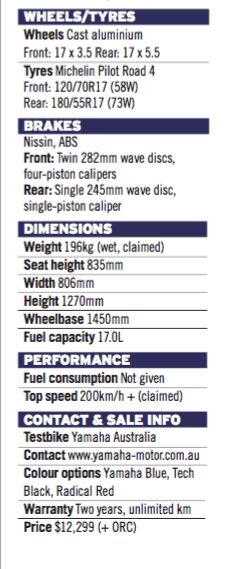The show must go on – that’s how the saying goes, right? Yamaha had organised the launch of its new MT-07-Tracer in the beautiful Hunter Valley, but the timing was terrible. Cyclone Debbie had ravaged Queensland, and the north-east coast of NSW suffered flooding in the aftermath.
In the Hunter, Cyclone Debbie’s effects were still being felt, with rain and wind sweeping across the area, wreaking havoc on all in its path. We’d been told to expect wine tasting, feasting and even a helicopter ride around the region, but all that seemed highly improbable as we were bussed from Newcastle airport to Sebel Kirkton Park resort.
Instead of a simple ride down the Putty Road towards Sydney, we journalists would have somewhat trickier conditions to contend with the following day. I went to bed early praying for sun in the morning and dozed off to the sound of the not so perfect storm.
The prayers must have worked because all was silent in the morning, with a hint that the sun might actually come out to play. As it turned out we couldn’t have had better conditions to run the Tracer through its paces, with mostly dry and sunny riding and the odd obstacle thrown in to keep us on our toes – and also test the ability of the new machine to keep its rider on the seat.

Walking out of the hotel lobby and seeing the bike in the flesh for the first time induced a good feeling. Actually, it’s always a good feeling at a launch to see all the bikes lined up neatly in their various colour schemes with a sampling of each on display. Traditional Yamaha Blue, Tech Black and especially the radical red bikes were receiving a lot of attention from the journos, but I just couldn’t decide my favourite, so had a play on them all, including the ‘concept’ model that Yamaha had equipped with all the adventure bells and whistles.
The Tracer is definitely a well-finished machine. Despite a relatively low retail price of $12,299 (+ ORC), it’s still built in Japan – which says a lot about the effort that Yamaha has put into making it. If you’ve ever dealt with the Japanese before, you soon learn that they have too much pride to let imperfect workmanship out the door, or to do things by halves, and that was evident when looking closely at this machine.
Even though the bike’s bones have been left slightly bare to keep the price down, you do get a certain amount of fruit straight out of the box. I particularly like the crossbar situated between the handlebar uprights that is drilled to allow the bolting on of a GPS or other bar-mounted devices.

The seat is firm but comfortable and steps up at the rear to carry a passenger in comfort. The pillion has a grabrail to hang onto if they’re not in the mood to grab the rider’s hips, which is a nice touch if you don’t want to be too friendly.
The twin symmetrical headlights are not just for show; there’s a good spread of light available from the matching pair, both shining brightly when high beam is clicked.
Importantly, the machine also comes pre-wired to accept all Yamaha’s electronic genuine accessories. There’s quite a choice available, with left and right-side charging ports, heated grips, spotlights and also a ‘his and hers’ heated comfort seat. Kudos to Yamaha for including this in a LAMS bike.
Styling is taken from the bike’s big brother, the MT-09-based Tracer, and that’s a good thing. From the tip of the fairing all the way back to the panniers, there is a clean look and a feeling that you are getting a proper touring bike and not just a budget learner bike.
The pipe is nicely tucked away but takes up the room that perhaps a centrestand may have fitted. I’m not so sure there is as much emphasis on having a centrestand as there once was, especially with modern chains and lubricants, but it would still be a nice touch.
Yamaha has also put some decent boots on the Tracer, with Michelin Pilots fitted as OEM. And the tyres play a big part in taking the Tracer above the realms of normal expectation. Throughout the test I had to remind myself that this was an entry-level LAMS machine at a budget price. It punched above its weight and I’m sure the Michelins have helped pull the whole package together.
Sitting on board for the first time allowed me to get accustomed to the general relationship between ’bars, seat and ’pegs. It’s quite spacious and upright, which once again is ideally how you want to feel if you are going to survive a journey into the middle of nowhere – or even just to work.
Picking the bike off the sidestand is a cinch, as is finding the stand while seated, and that certainly helps when it comes to mounting and dismounting.
It feels light, and that’s backed up by Yamaha’s claim that this is possibly the lightest sports-tourer available with panniers fitted as standard. The semi-hard panniers are smallish and won’t accommodate a helmet, but they are big enough to fit most of the items you’ll need on a short trip.
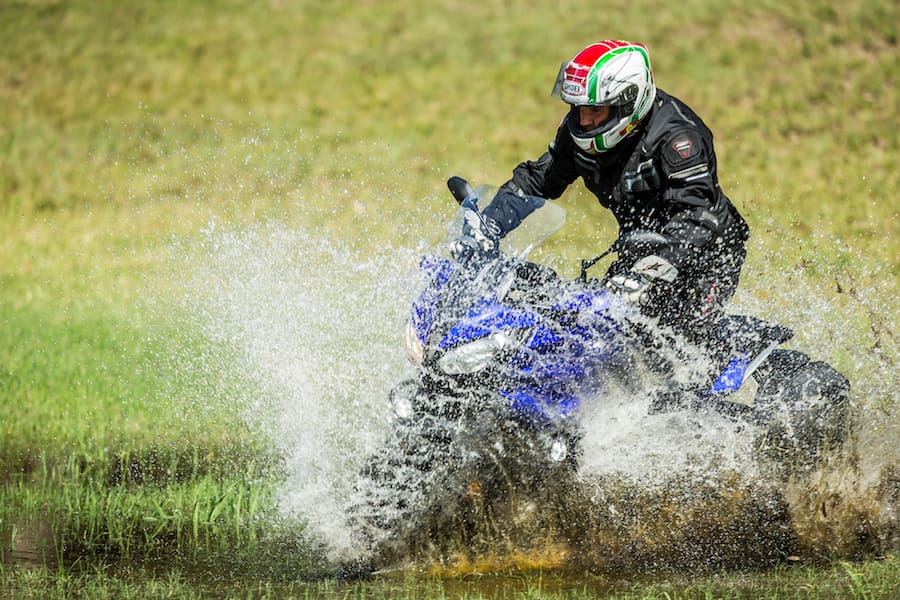
The LED dash has two buttons that scroll up and down through a pretty standard information set: two trip meters, an odometer, instant and average fuel use, plus a temperature gauge. One bugbear was that it would be nice to be able to scroll through the menu from the switchblock instead of tapping the dash at info change time.
Talking of bugbears, I also find the indicator switch a little insubstantial in its feel. It works perfectly but it would have been nice to see that one heavily used button get the same quality switch as an FJR or similar.
Every bike has its nuances, but the proof is always in the riding, so we donned our lids and selected first. Time to tour.
There are plenty of LAMS bikes on the market, from small-capacity machines to these mid-bore bikes that meet the 660cc/150kW-per-tonne criteria. The heart of this bike is the 270º crossplane 655cc parallel-twin engine straight out of the LAMS version of the MT-07. I still have trouble believing that this engine is learner-approved as it really has a good spread of power and, even more importantly, a very smooth delivery. It’s easy to make departures from the lights, and to keep it running well in slow, on-off throttle situations.
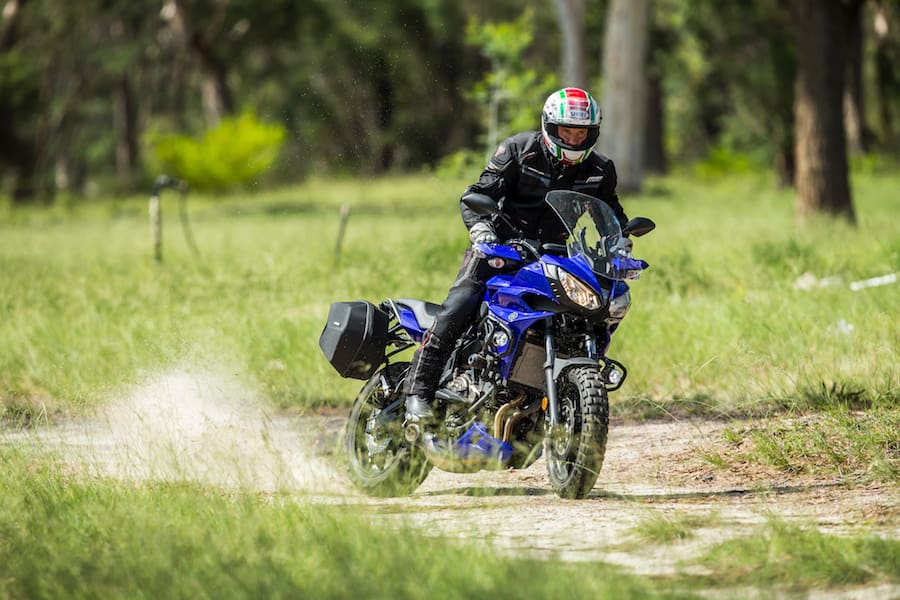
Out on the freeway in kilometre-eating mode, it’s surprisingly pleasant. Again I found myself asking whether this thing is really a learner-approved machine. It cruises at 100km/h at 4000rpm and only lets you know it’s not a big-bore bike when it’s time to overtake. But change back two gears into the meat of the powerband and it winds up to an acceptable passing speed.
It’s a capable cruiser able to sit on pretty much whatever highway speed you want all day long. Some people said that a top speed of more than 180km/h is possible but, being the law-abiding citizen I am, I never tried.
At speed it occurs to me that the manually adjustable screen could be higher or wider to deflect a little more wind away from my helmet, but as accessories filter in to the country and a bigger genuine screen surely becomes available, it wouldn’t take much to put it right.
Yamaha has taken that amazing little motor and housed it in a good solid chassis that has a swingarm 50mm longer than its naked brother. This makes the Tracer very stable at all speeds and gives the user a great deal of feel and control. Even though the bike is longer, it still turns very nicely and doesn’t drift wide like some longer motorcycles can.
The Putty Road is a great test with varying corner speeds and surfaces, so it quickly shows up a bike’s strengths and weaknesses. Although the worst of the weather had passed, the conditions still weren’t perfect and extra care was needed at times. I hit a stream of water crossing the road at one point, but the Tracer’s stability never faltered and its predictability gave me a good deal of confidence.
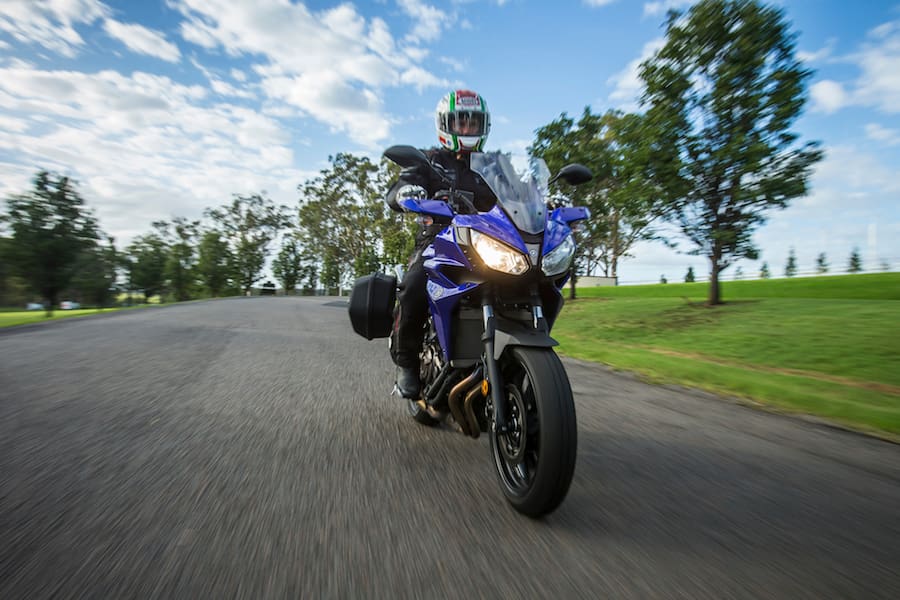
The long travel suspension does its bit to help absorb bumps and give a great ride. However, the non-adjustable front fork and preload-only adjustment on the rear shock occasionally bring you back to the reality that this bike was built to a budget, and although many of the journos said it was better than the MT-07 (which it is), it doesn’t give you that ultimate smoothness that a $20,000 bike might. Then again, maybe that just proves how good it is – it’s close enough to the top-end bikes in terms of handling and performance to make you compare them.
One thing that was top-notch was the fuel range. When we left in the morning my bike wasn’t full. Apparently that didn’t matter because we set off for the full-day trip back to Sydney with just the one fuel stop before we hit the big smoke. I got more than 220km from a tank and there was still more to go.
The fuel gauge on the LED dash shows empty early as a built-in safety margin, but Yamaha assured us there was still at least 50km to go when the light started to flash.
On the instant fuel economy gauge I was getting between 3.8 and 5.5 litres per 100km, which is very economical and means that day-to-day running costs will be low.
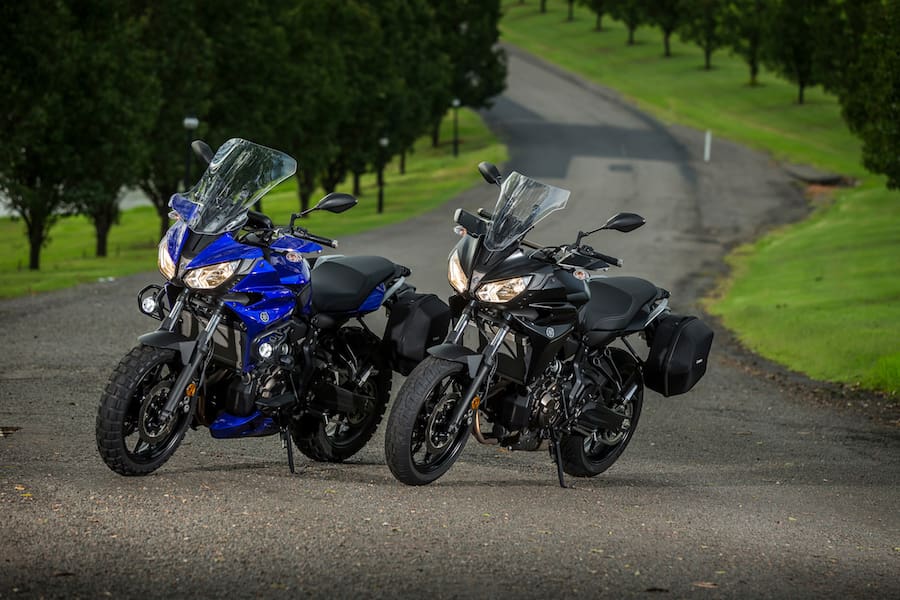
By the end of the day, I was left thinking that it was the perfect launch after all. Although damp roads and debris strewn across our paths made the going tough at times, it brought the capability of this machine to the fore.
The baby Tracer is overall a great bike and Yamaha has done well to enter the largely untapped LAMS Sports Tourer market with an offering this good. As a learner bike, it complements Yamaha’s adventure range, but I wouldn’t necessarily expect just learners to buy it.
With its outstanding performance and overall packaging, it has a lot to offer everyone. Coming standard with panniers is what sets this bike apart from the crowd and at $12,299 it really is a bargain.
The Tracer is an all-round package that could suit young or old, male or female, and is on showroom floors all around the country right now.
TEST Steve Martin PHOTOGRAPHY ikapture
